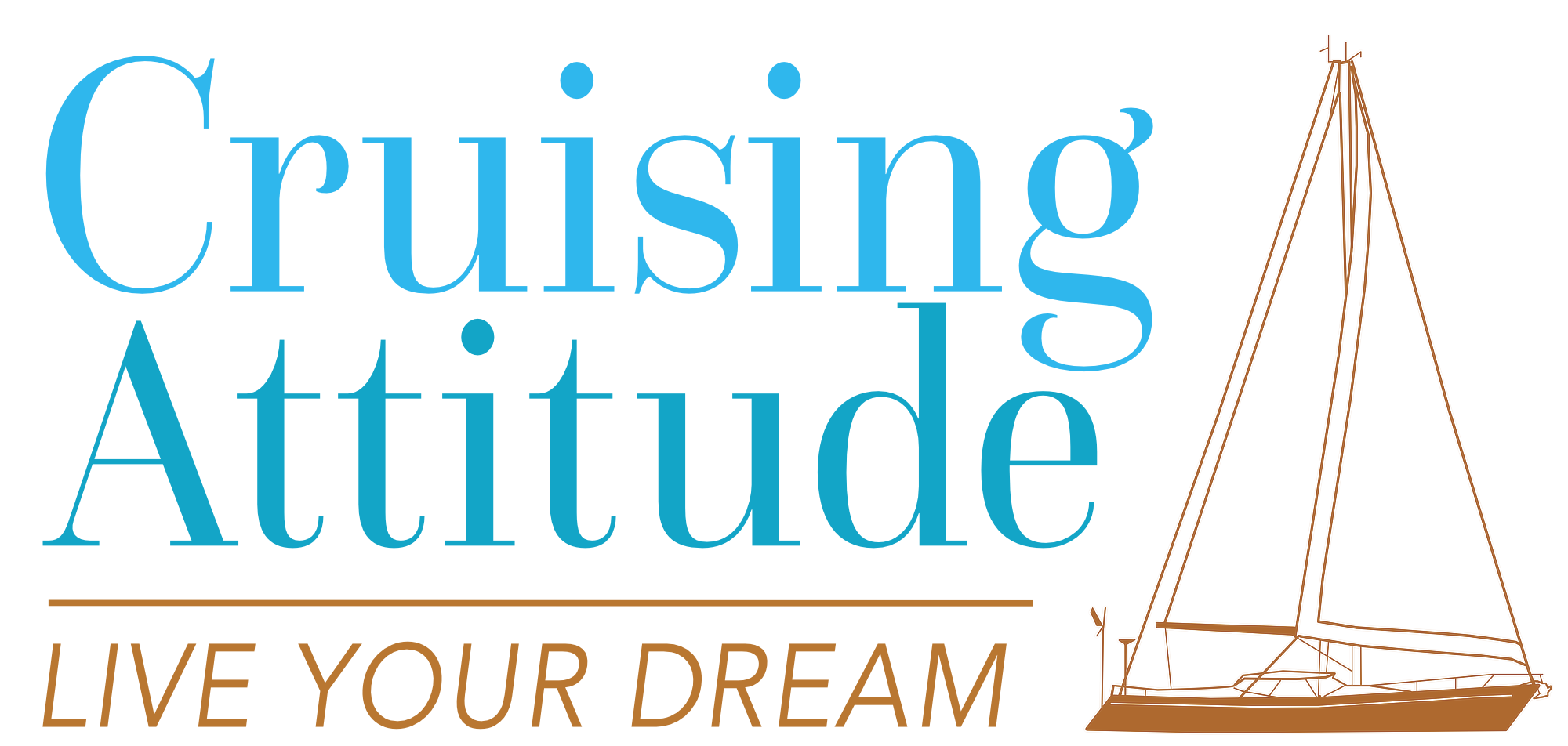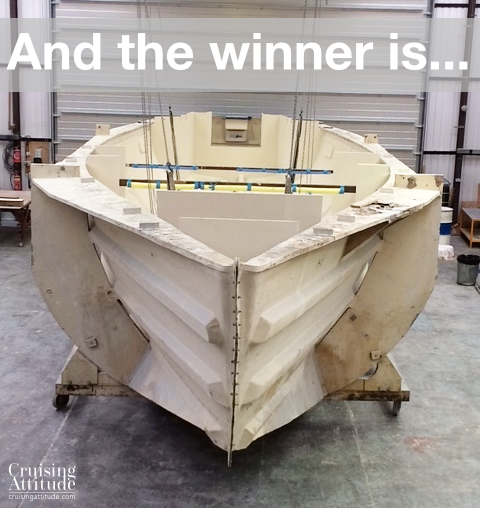
.
As we entered into the fall of 2013, we realised it was time to make a final decision. All three boats that we were interested in had combined waiting list and building times of up to 18 months and we wanted a boat for early 2016.
Why we decided on the Discovery 55
All three boats, the Discovery, the Hallberg-Rassy, and the Regina af Vindö fulfilled all of our original requirements. The most important reason for our choice was that the Discovery is a semi-custom build. It was not the most expensive of the three.
End of November 2013
Signing the contract and our first meeting with John Eustace, Discovery’s Owner Care Manager
During our first meeting with the yard as “owners”, we realised that building a Discovery was going to be a lot of work for us. There were a million possibilities in terms of options and customisation.. We had researched and discussed lots of good ideas to steal and bad ideas to avoid on other boats. We wanted to incorporate the good ones into our boat.
For example, we found out that we despise rounded-off, oval-shaped dinettes while sailing the Bavaria 40. Why? Because our favourite activity at the end of the day is putting our feet up with a good book and a cup of tea or a glass of wine. In the cockpit, that’s easy, you lean against the cabin wall and put your legs up on the bench. Inside, if the saloon is oval as they are in most Discoveries and recent Oysters, you can’t lean against anything flat. So we requested a rectangular dinette with perfect 90° angled corners.
At the time of signing the contract, we needed to have decided on four things to begin the design process: the colour of the hull, the hull option, the keel option (regular or shoal) and the choice and size of anchor (because the anchor determines the stem head design).
The only thing that is always the same for each Discovery 55 is the hull form, although there are two options — for either vertical or horizontal windows in the rear cabin. The the vertical ones are larger, we thought the horizontal ones looked more balanced.
You can choose any colour you want and we chose the classic and elegant navy blue that most Discovery owners have chosen. At first we wanted a white hull, thinking that the dark blue would make the interior of the boat hot during a sunny summer day. But after speaking with John and checking with some other owners, we felt assured the insulation was thick enough to prevent this, and we changed our minds.
I had already done tons of research on what anchor was best, and although the is no “one best anchor”, the Spade won out over the Rocna and the Ultra because:
- We did not want stainless steel
- The roll-bar of the Rocna takes up a lot of space for the size of anchor we needed
- The weighed tip of the Spade gave us more confidence of good performance in the sea-weedy anchorages you’ll find in some parts of Scandinavia.
After reading the excellent advice of John Harries over at the Attainable Adventure Cruising website, we specified an oversized 55kg (120 lb) S-200 galvanised Spade. John advises that you should go, if possible, two sizes up from the table specifications. He gives a number of compelling reasons for it. He jokes that if the marina isn’t laughing about the size of your anchor, it’s not big enough.
According the Spade Anchor Selector wizard, for a boat that’s 55 feet, for extended cruising and difficult sea beds, you should chose the 37 kg (lb.) S-160. The next model up is the 44 kg S-180, and then you have the S-200 that we chose.
We wanted the shoal keel to give us more possibilities in the archipelagos of Scandinavia. We were to be the first 55 with a 1.8 metre (5.9 ft) keel.
Discovery now had the answers to this three questions and could officially move our boat into the construction pipeline. The build was to begin in February 2014.
Fast-forward to February 2014
The laminating process begins – and here are the first photos of Freja. We had to decide about everything that has through-holes since the balsa layer needs to be cut out from each of the hole areas.

Gelcoat and epoxy layers finished – first layers of fibreglass go in the mould.
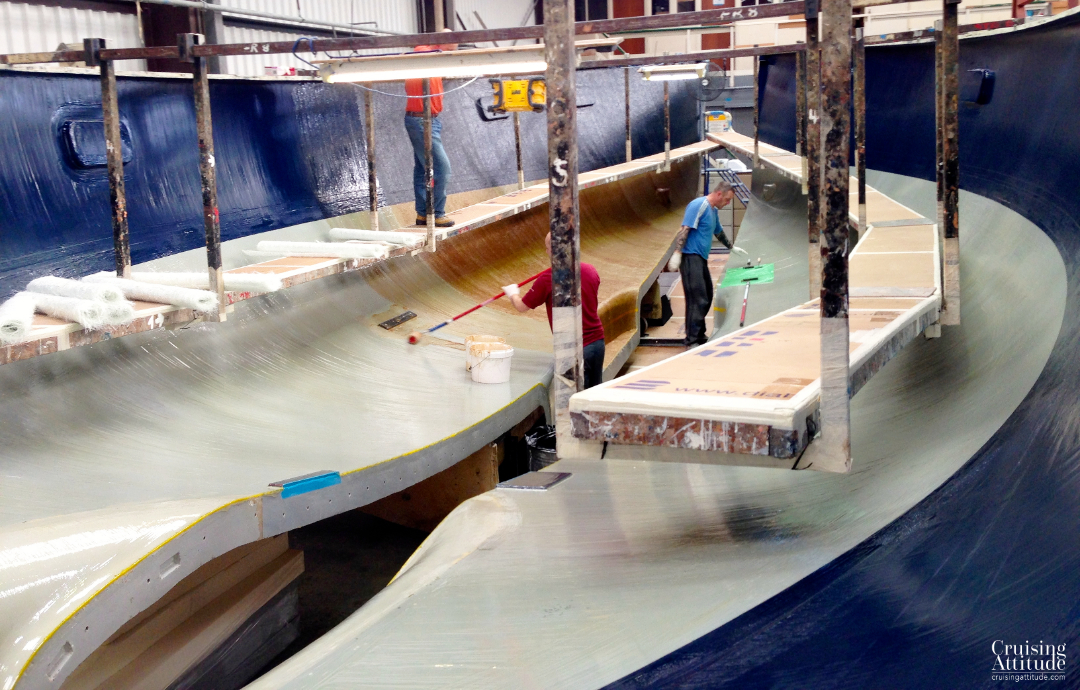
Another view of the fibreglass layers going in
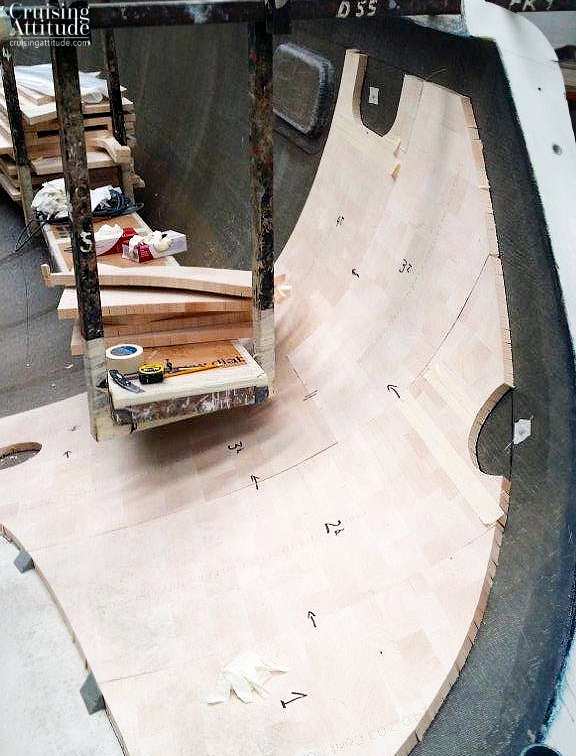
The end-grain balsa wood layer going in. This is the insulation layer.
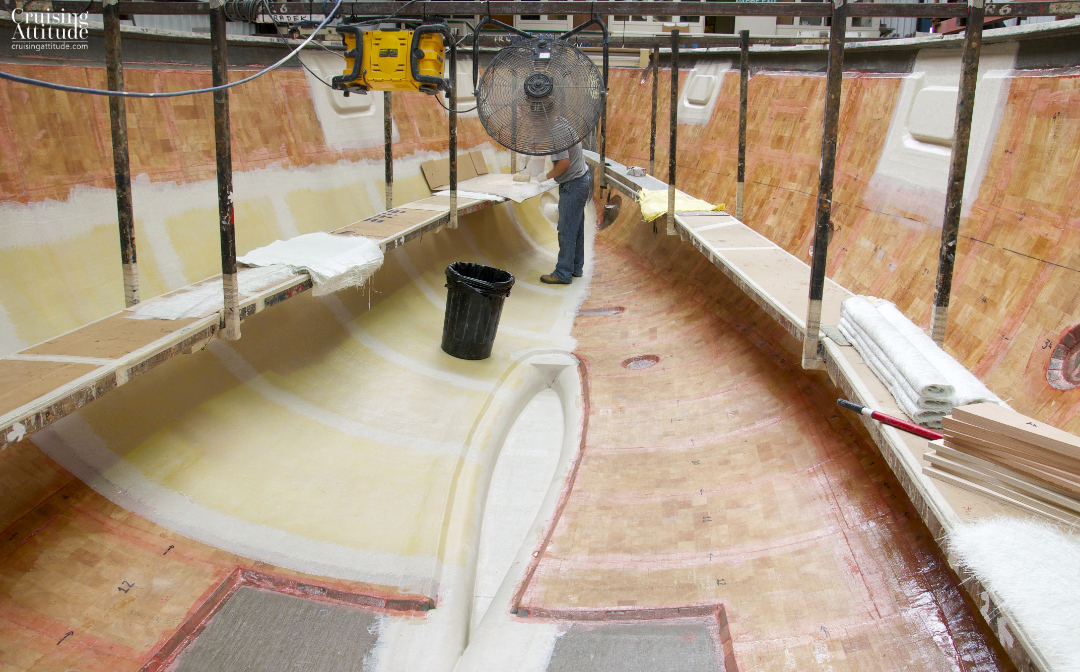
Kevlar layers are added for extra strength at the front of the hull. The yellow sheets are Kevlar, the white sheets are fibreglass.
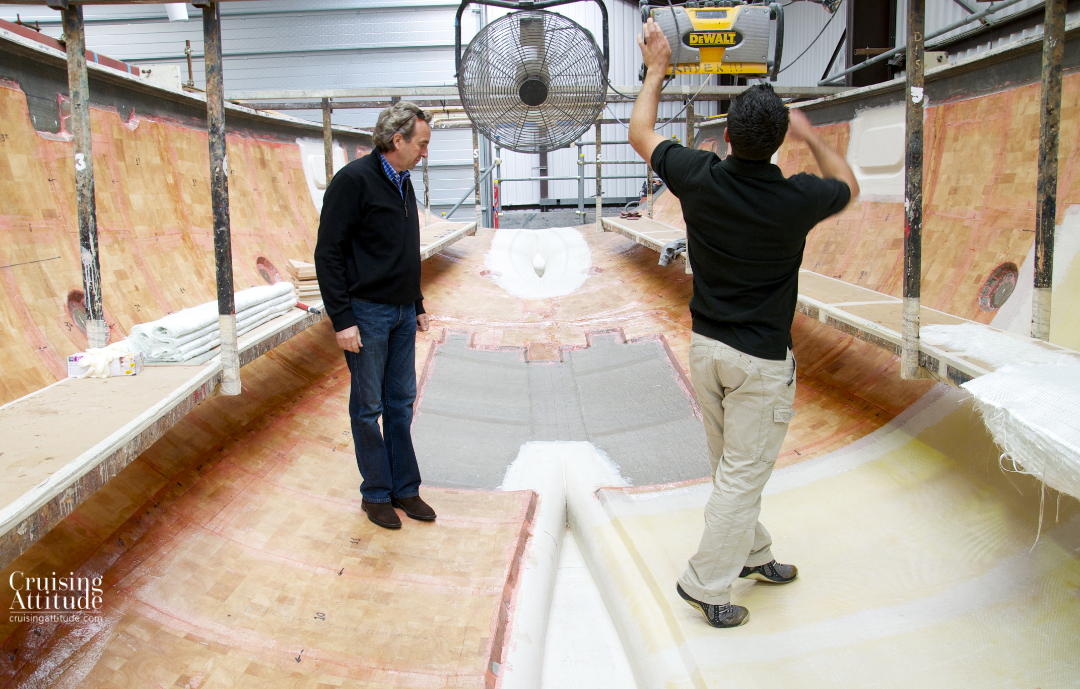
Jacques checking out the Kevlar layers
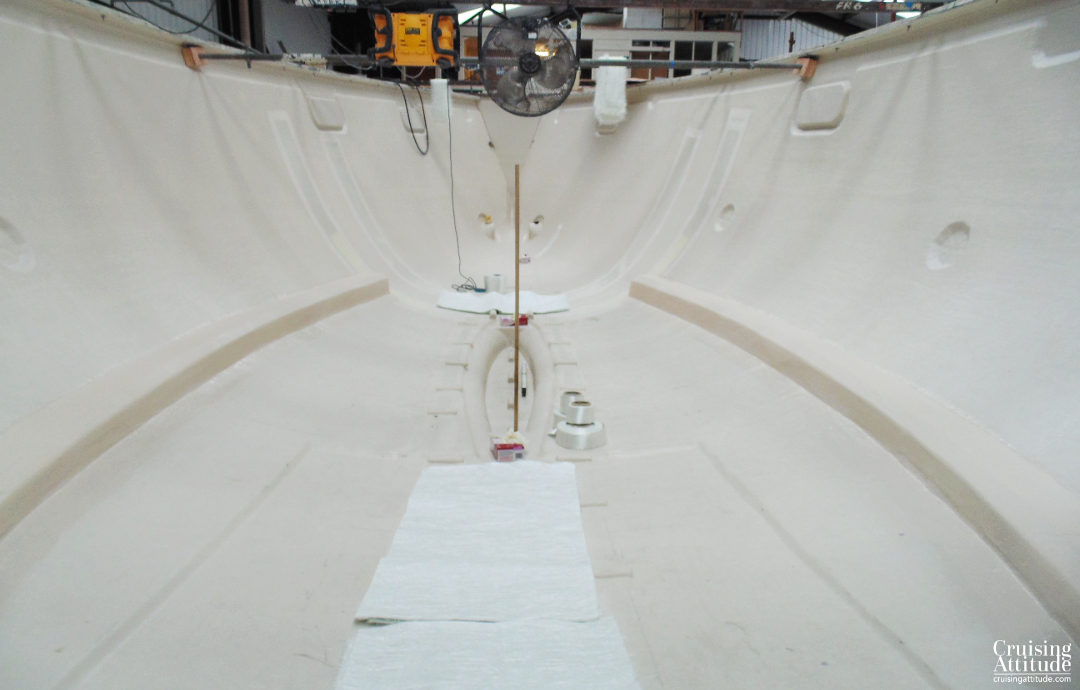
The final fibreglass layers are laid in
